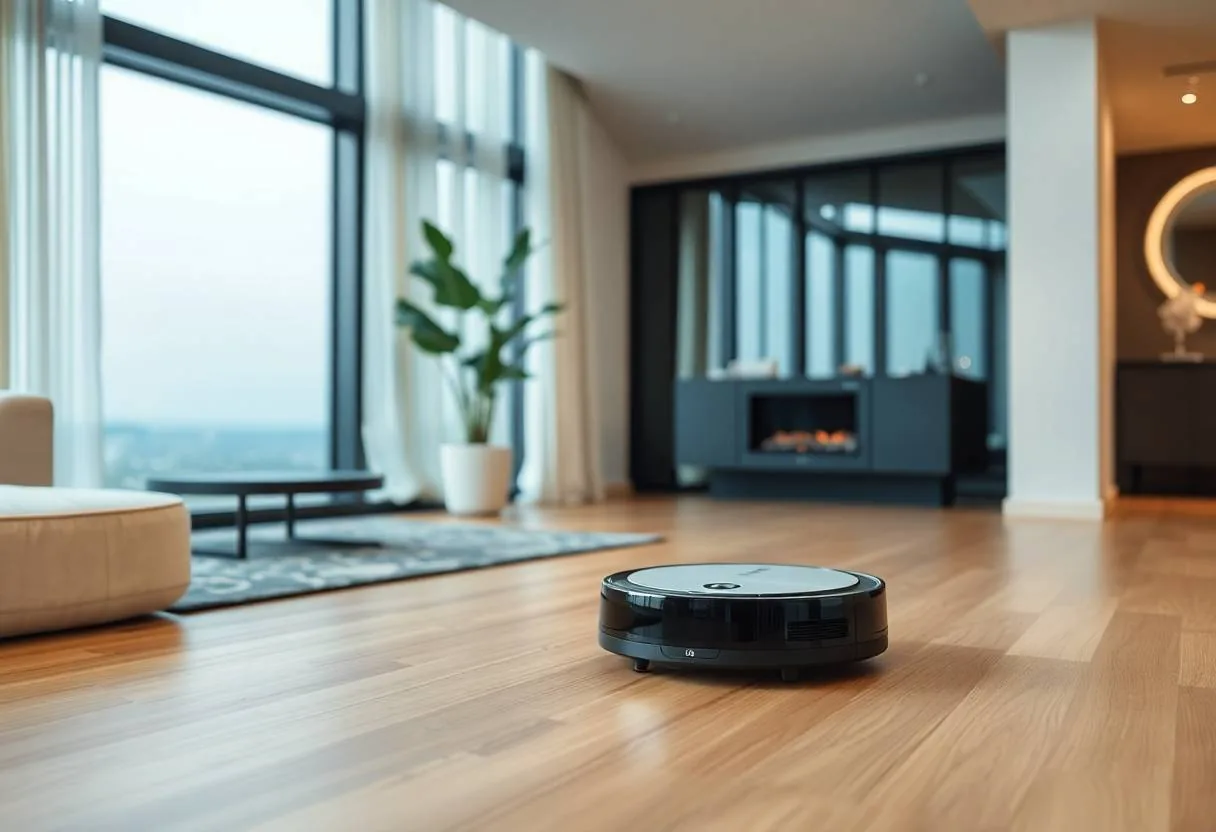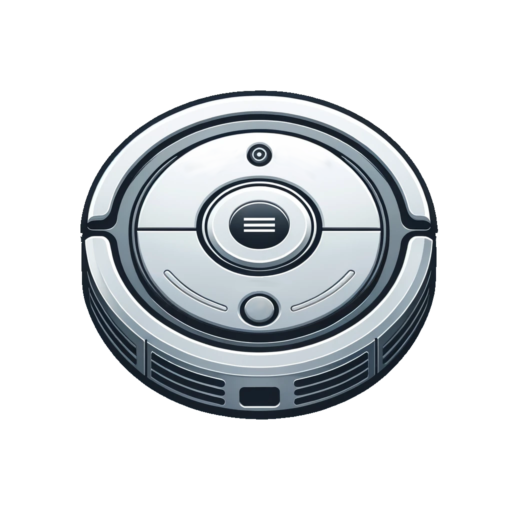
Is it worth it?
Dragging a heavy push-mower across a small, obstacle-filled yard is nobody’s idea of a relaxing Saturday. The Yardcare E400 robotic lawn mower targets homeowners with lawns under 400 sq ft who crave an always-trim look without the sweat. By pairing boundary-wire guidance with app scheduling, it promises to cut grass—not weekends—while teasing you with the prospect of sipping iced tea on the deck as it works.
After three weeks of hands-on testing I’m convinced the E400 is a clever time-saver for compact spaces, yet it isn’t the magic bullet for every lawn. If you enjoy tinkering with smart gadgets and your yard is relatively flat and free of complicated flower beds, the E400 will feel like hiring a silent gardener. But if you expect Roomba-level mapping or have rough terrain, its limitations surface quickly—read on to see whether the trade-offs match your expectations.
Specifications
| Brand | YARDCARE |
| Model | E400 |
| Cutting Width | 7.87 in |
| Battery Run Time | 80 min |
| Max Lawn Size | 400 sq ft |
| Height Adjustment | up to 2.4 in |
| Weight | 29.3 lb |
| Cutting Positions | 16 |
| User Score | 3.9 ⭐ (15 reviews) |
| Price | approx. 500$ Check 🛒 |
Key Features

Smart App Control
Pair the mower via Bluetooth, then hand off commands to Wi-Fi so you can start, pause, or reschedule from the grocery store.
The interface shows battery percentage, last mowing duration, and a simple week calendar. No steep learning curve—tap, drag, save.
Auto-Recharge Dock
When the battery falls below 20 % the E400 follows the boundary wire home, aligns itself with two copper rails, and tops up in roughly 60 minutes.
That means a half-acre cut would require multiple cycles, but for a 400 sq ft plot it finishes in one charge with juice to spare.
Adjustable Cutting Height
Dial a manual knob from 0.8 to 2.4 in to match cool-season fescue or warm-season Bermuda needs.
Because mowing little and often is healthier for grass, I found the 1.6 in setting ideal—no scalping, less thatch, greener color.
Boundary-Wire Guidance
Instead of lidar or GPS, the mower relies on a low-voltage perimeter loop.
It keeps cost and complexity down while ensuring the robot never rolls into flower beds. The trade-off is setup time and the need to occasionally press the wire back into the soil after freeze-thaw cycles.
Safety & Obstacle Sensors
Three tilt sensors stop blades within 0.5 s if the mower is lifted, and a front bumper triggers a 180° retreat on impact.
During testing it nudged a forgotten garden hose, halted, reversed, and continued—no cuts to the vinyl or to curious toddlers’ fingers.
Firsthand Experience
Unboxing felt more like opening a large drone kit than a mower: the gray shell, low-profile charging dock, 330 ft of perimeter wire, and a bag of 250 plastic pegs all tucked neatly in recycled pulp trays. The only tool I needed was the included Allen key to bolt the mulching blades—nice touch.
Laying the boundary took me 40 minutes with a landscape staple every 3 ft. Pro tip: pre-mow once with your old mower so the wire sits flush to the soil and won’t be scalped later. The app walked me through pairing over Bluetooth first, then pushed the Wi-Fi credentials so I can ping it from the office—no account fees, just a quick firmware check.
Day one, the mower hummed at 58 dB (phone reading) which is roughly conversational level; my neighbor’s dog barely twitched an ear. The random pattern looks chaotic, yet after 90 minutes—including a self-recharge when it dipped below 20 %—every blade of grass was even. Mulched clippings dropped so fine that I couldn’t see them, a perk for soil nutrition.
By week two I noticed it occasionally high-centered on a tree root. Lifting its 29-lb frame revealed the plastic chassis is tough enough, but the 5-in wheels lack the deep treads of pricier competitors. I filled the root pocket with topsoil and the issue vanished—maintenance lesson learned.
A thunderstorm rolled in on day ten. The E400’s rain sensor stopped the blades and crawled home before the first fat droplet. After the storm, I wiped the housing with a microfiber cloth; IPX5 splash resistance did its job, yet I wouldn’t hose it down. Battery health remains solid: the app shows 86 % of design capacity after 18 charge cycles, suggesting a projected two-to-three-year lifespan under normal weekly mowing.
Pros and Cons
Customer Reviews
Early adopters praise the E400 for freeing up leisure time and for its surprisingly neat cut on small plots, while detractors mostly point to out-of-box defects or frustration with the boundary setup. Overall sentiment leans positive but cautious—buyers love the concept yet expect premium reliability at this mid-range price.
Set up took 20 min and my backyard looks manicured without effort
Charging base failed on day one and support couldn’t rush a replacement
Instruction manual was clear and now I skip bi-weekly mowing chores
Scheduling in the app means my lawn stays trim every morning
Great cut quality but wish the wheels had more grip on wet slopes.
Comparison
Put the E400 next to the Worx Landroid S and you’ll notice both serve small lawns, but the Landroid adds basic GPS and a more aggressive tread pattern—at a 20-30 % higher price. Yardcare’s choice of boundary wire keeps the sticker lower, yet sacrifices the geofence convenience some users crave.
Against the Husqvarna Automower 115H, the E400 undercuts cost by roughly half, though Husqvarna delivers a 0.4-acre capacity and spiral-cut logic that handles patches faster. For owners of postage-stamp yards, paying the premium feels excessive, making the E400’s value argument strong.
Budget seekers might eye a generic no-name robot off e-commerce sites for even less, but warranty support and spare-part availability can be a gamble. Yardcare provides a US-based phone line and a one-year battery guarantee—reassurance that’s worth the modest price bump.
If your property has steep inclines or more than 500 sq ft of grass, step up to a mid-tier mower with larger wheels and multizone GPS. Everyone else may find the E400’s feature set checks enough boxes without bleeding the wallet.
Frequently Asked Questions
- How long does installation really take?
- Most users report 30–60 minutes for a 400 sq ft yard, including staking the wire.
- Can it handle rain?
- Light showers trigger the rain sensor to pause mowing and return to base, but heavy downpours should be avoided for safety.
- Is the battery replaceable?
- Yes, Yardcare sells clip-in replacement packs and publishes instructions—swapping takes under 5 minutes.
- Will it mow front and back yards separated by a gate?
- Only if you install a continuous boundary loop through the gate or manually carry the mower and dock to the second zone.
Conclusion
For city-lot owners tired of weekend mowing but not ready to shell out four figures, the Yardcare E400 hits a sweet spot: quiet operation, respectable cut quality, and fuss-free app control at a mid-three-digit price range. It shines on level, uncomplicated lawns where installation is a one-time task and the robot can roam freely.
Skip it if your yard is hilly, heavily landscaped, or you loathe running boundary wire; in those cases, a GPS-enabled model will justify its higher cost. But if your biggest hurdle is finding the time—not the tech—to keep grass below HOA height, the E400 offers genuine freedom and could pay for itself in a single season of reclaimed Saturdays. Check current online deals; occasional discounts make it an even more compelling entry into robotic lawn care.



